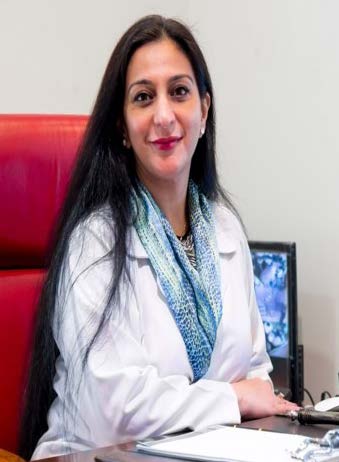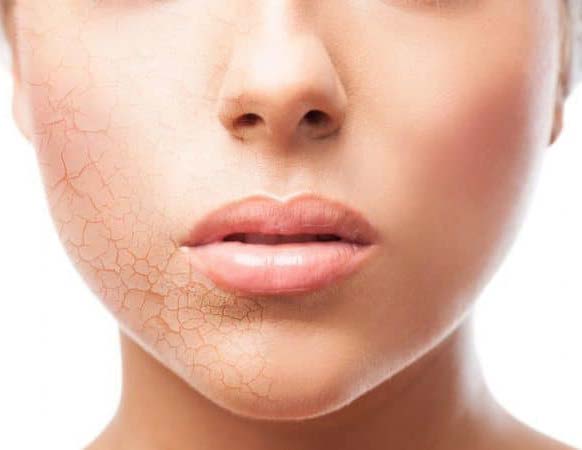Dermatologist
MICRO NEEDLING RF

Dr Chiranjiv Chhabra Dermatologist Director, Alive Wellness Clinic 25 years in practice
Dr Dr Chiranjiv Chhabra is an undeniable powerhouse in the field of aesthetic medicine. She has obtained her MBBS and post-graduation degree in Dermatology, Venereology and Leprology from Maulana Azad Medical College (MAMC), New Delhi. Having received various specialised trainings from world renowned doctors, today Dr Chhabra is imparting her expertise to doctors worldwide. In the years of her prolific practice, she has been the force behind innovative change in prevailing non-invasive wellness along with aesthetic remedies.
Know more from Dr Chhabra on micro needling RF:
Who is a good candidate for microneedling RF? How do you approach your patient to determine if this is the ideal treatment?
Microneedling was initially developed as a tool for skin rejuvenation.
Microneedling radiofrequency (RF) is ideal for those who want to improve the appearance of minor skin imperfections such as fine lines and wrinkles, skin laxity, scarring like old acne scars, stretch marks, telangiectasia, uneven skin tone and texture.
We understand their concern, assess their skin, and explain the benefits of the technology. We also show the before and after pics that indicate the results of the treatment.
How can best results be derived from this treatment and within what timeframe?
Tell us about the technique and the number of sittings required?
Best results can be derived by thorough assessment of skin, the indications and accordingly formulating a treatment plan and parameters setting of each session. Every indication has a different parameter setting ranging from depth of RF needle, duty cycle of penetrating needle and intensity of the technology. Every area of face needs to be specifically treated according to the condition. A face may have open pores, scars, lines and wrinkles, and so a clinician has to plan the treatment accordingly.
Collagen building and remodeling takes three to four weeks. We need multiple sessions spaced at an interval of 15-21 days. The spacing and number of sessions depends on skin condition.
Microneedling uses a fine needle to create micro wounds in the skin. This triggers the production of elastin and collagen. It’s also called skin needling or collagen induction therapy. If the procedure also uses radiofrequency waves, it’s called radiofrequency micro needling. The needle releases radiofrequency into the channels, causing additional damage. This enhances the effects of standard micro needling. The treatment is a form of controlled skin injury. The damage stimulates the growth of healthy new skin, which can benefit common skin issues such as acne scars, fine lines and wrinkles.
What is the recovery time for a patient who undergoes the micro needling RF treatment? What is the post-treatment care involved?
The procedure is typically well-tolerated with no downtime, besides some erythema, mild edema, and dryness that can last for two to three days. The patients can resume usual daily activities starting the next day, with the caution to wear sunscreen with regular reapplication and to avoid sun exposure and harsh chemicals at least for one week.
In post care, it is advised to nicely moisturize the skin. Do not scrub, exfoliate, or peel for a week. Also, avoid using anti pigmentation creams.
Any contraindications involved that one should be aware off? Also, is there anything the patient must not do after the treatment?
Contradictions could include the patient having a history of eczema, psoriasis and other chronic conditions; active acne, especially inflammatory lesions; and patients with extreme keloidal tendencies.
Post the treatment, the patient should not do scrubbing, exfoliation, peeling for a week. The patient should also not use anti pigmentation creams, and should avoid direct sunlight for a week.
Which do you consider as among your most challenging as well as successful case study for this treatment, and why? About five years ago, a 72-year-old female patient consulted me with concerns of loose skin on her jawline, neck, eyelids and wrinkles around the mouth. She also had a history of sunspots and dyschromias on face. I advised her microneedling with radiofrequency, and we started with three to four sessions in a gap of two weeks. The patient had good results and appreciated the treatment well. After doing three to four sessions, she went for a vacation and had a history of extreme sun exposure.
She came back to me unhappy and angry and blamed the microneedling RF for the uneven skin tone and hypopigmented spots that she has developed due to extreme sun exposure. I counselled her that extreme sun exposure can lead to a mix of dark and light spots on the face, which is not related to microneedling RF. I also counselled her to add PRP (platelet rich plasma) to the microneedling RF sessions. The patient agreed and I did the microneedling RF with PRP.
PRP was spread on the face during the microneedling RF. Within two to three sessions, the patient had an excellent recovery with reduction in uneven skin tone, patchy skin and the wrinkles around her mouth also improved. After her experience, the patient went on to refer many others for the same. She still continues with the treatment and does it once a month. This has been a challenging and successful case study for me.
Depending on the skin condition, we need multiple sessions spaced at an interval of 15-21 days.

Picture: For representational purpose